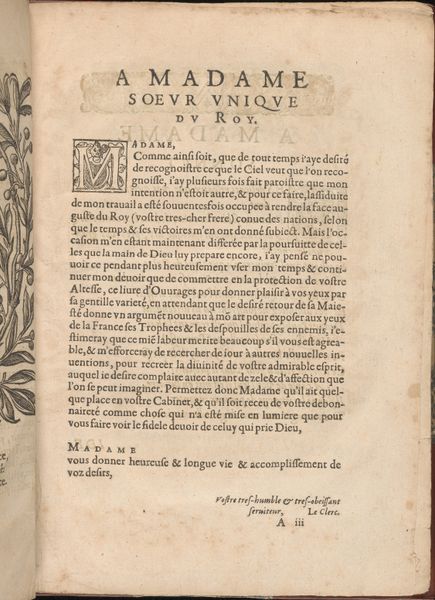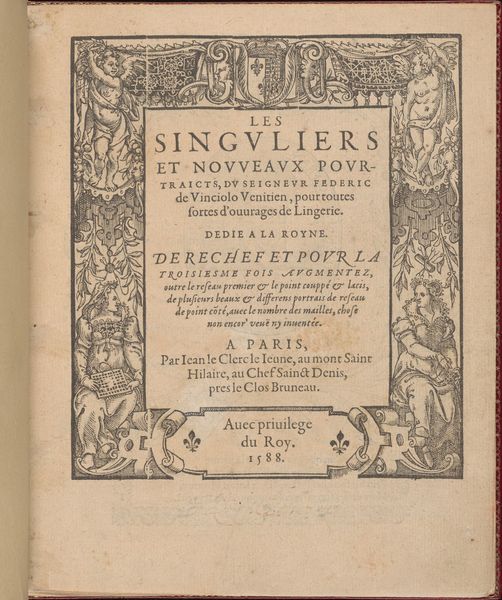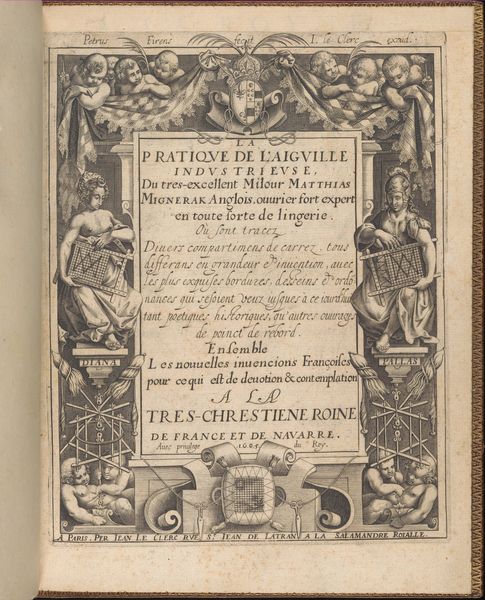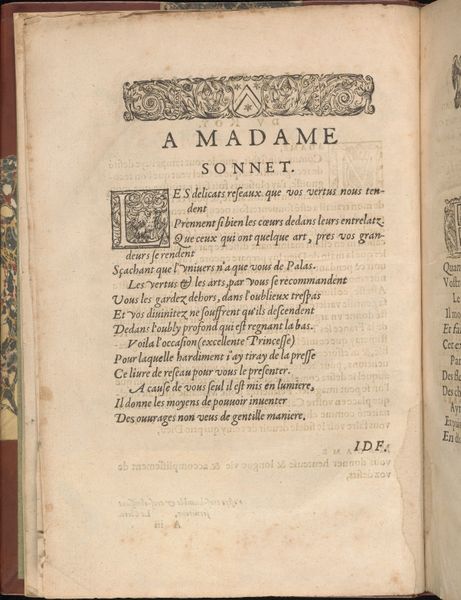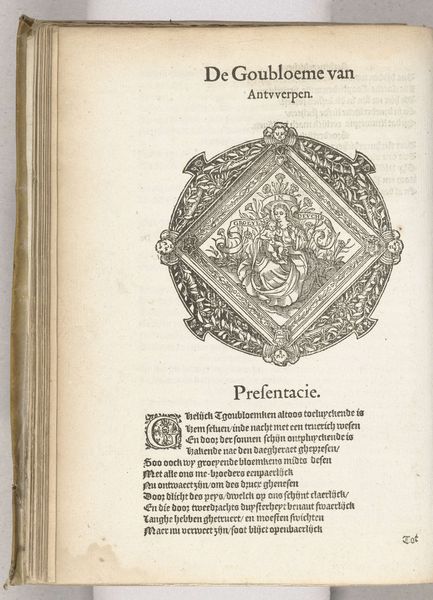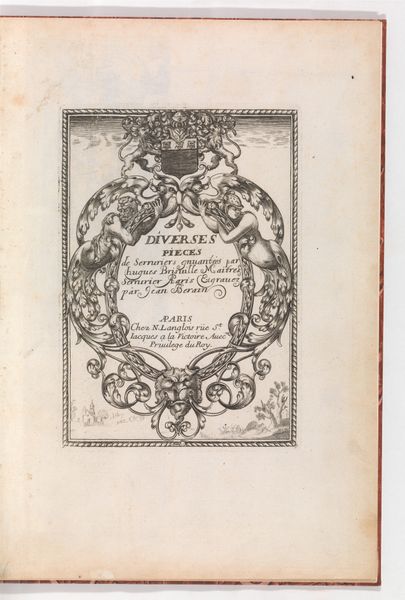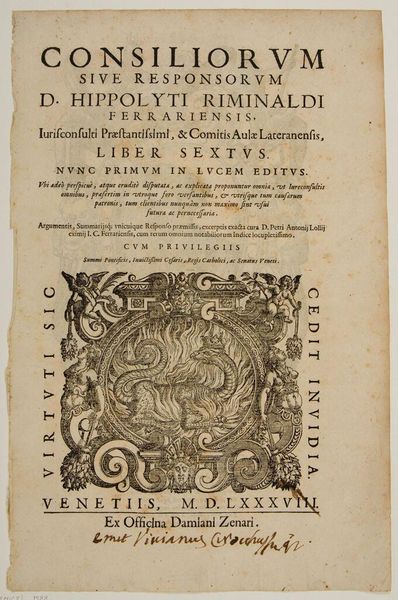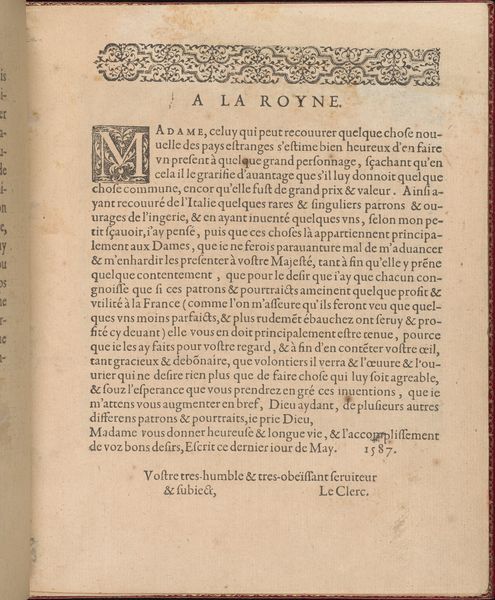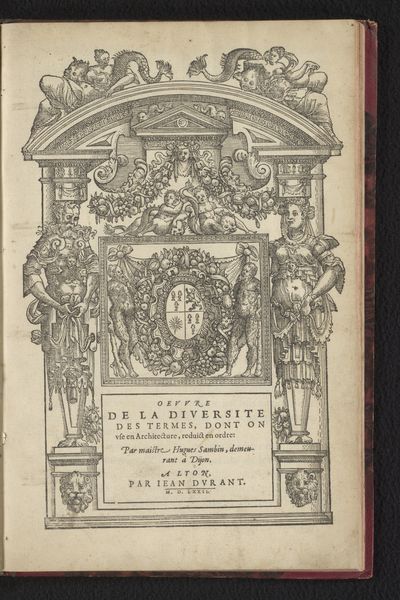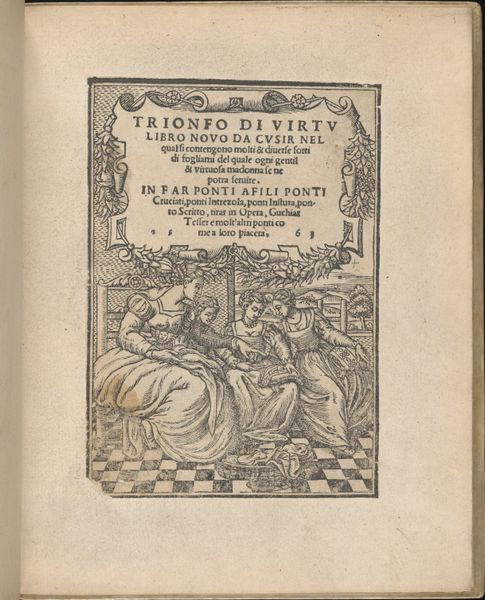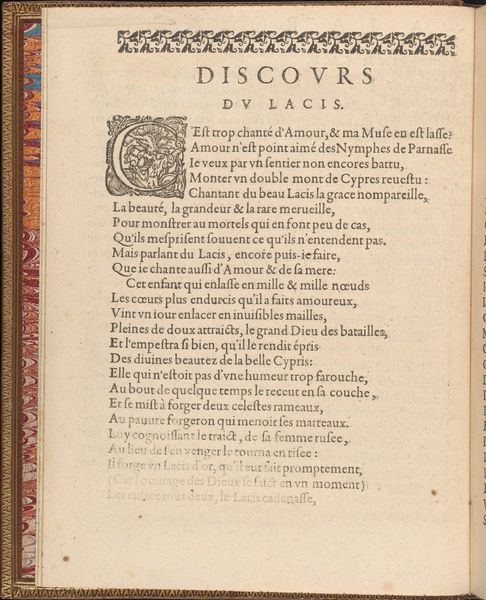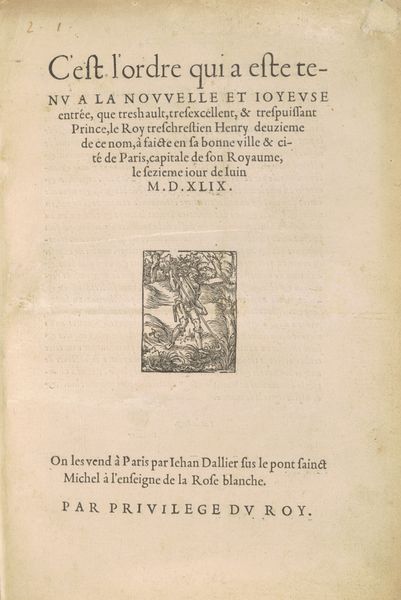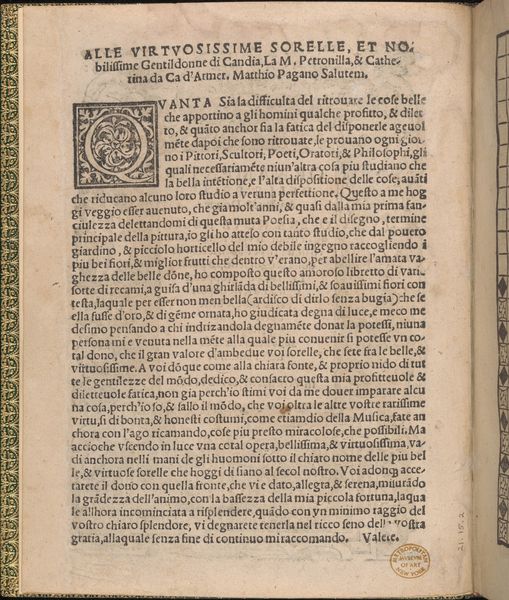
Les Secondes Oeuvres, et Subtiles Inventions De Lingerie du Seigneur Federic de Vinciolo Venitien 1603
0:00
0:00
drawing, print, engraving
#
drawing
# print
#
11_renaissance
#
italian-renaissance
#
engraving
#
miniature
Dimensions: Overall: 9 7/16 x 6 1/2 in. (24 x 16.5 cm)
Copyright: Public Domain
Curator: Looking at this elaborate title page from 1603, I see "Les Secondes Oeuvres, et Subtiles Inventions De Lingerie du Seigneur Federic de Vinciolo Venitien." It's a print by Federico de Vinciolo, currently residing at the Metropolitan Museum of Art. My initial impression? It's intensely detailed, like a miniature world packed onto a single page! Editor: Miniature indeed! It feels dense, almost claustrophobic. The border is so active with figures and ornamentation; my eyes hardly know where to land. But it also has a kind of strange allure, doesn’t it? This invitation into a world of "subtle inventions"... almost seductive. Curator: Well, "lingerie" back then wasn't what we immediately think of today. It encompassed a broader range of linens and decorative needlework, hence the emphasis on patterns and borders described in the text. Editor: Ah, so a pattern book! That contextualizes it, brings it down to earth a bit. Still, the title feels aspirational, almost boastful. Were these patterns meant to signal wealth and status, then? A lady's refined leisure, perhaps? Curator: Absolutely. These intricate designs, rendered through engraving, speak to the virtuosity expected in elite households. Embroidered linens displayed not only technical skill, but also signaled membership in a specific social circle. Editor: There's a push and pull for me— the almost dizzying ornamentation versus the precision of the engraving... a craft manual trying to pose as high art, maybe? Curator: It is also Italian Renaissance-inspired, although it came slightly after the actual Renaissance timeframe. That could explain this contrast: wanting to achieve high art, but doing so in a rather accessible medium like print. Editor: Interesting. It’s as though Vinciolo wants us to see these patterns not just as embellishment, but as essential expressions of identity, even artistry. Almost as if decorating the domestic space was the last form of acceptable creation, if we look at gender roles at that time. Curator: It definitely makes you consider the quiet power that existed in those domestic realms. The politics of thread! It’s present in everything from clothing, table coverings to interior décor; patterns had deep significance, especially those designed to look good under candle light. Editor: It’s so tempting to dismiss this as merely decorative. I see now that it presents a complex interplay of artistry, social status, and the evolving role of women. It leaves me pondering all the labor behind each carefully placed stitch! Curator: And that’s what keeps me coming back to it. Thank you for pointing that out.
Comments
No comments
Be the first to comment and join the conversation on the ultimate creative platform.
